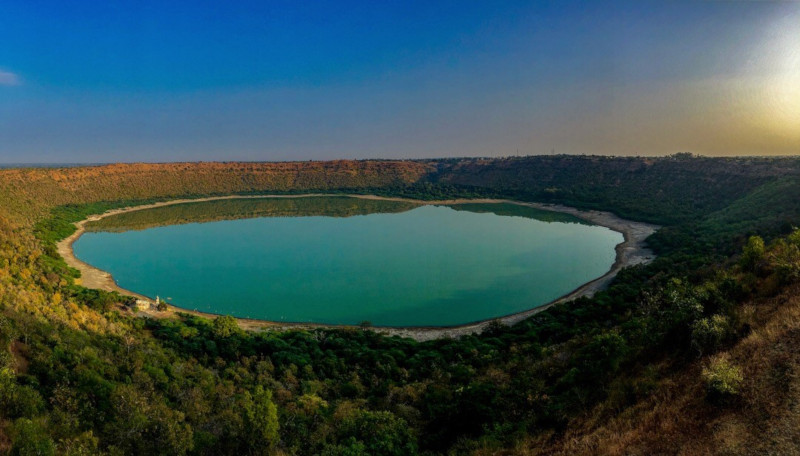
Lonar Lake Facts
- Perhaps most importantly, the stunning Lonar Lake remains an extremely rare type of geological feature. That’s because the site in fact represents one of only four known examples of lakes formed from a highly specific combination of factors.
- This simple fact alone sets it apart from most lakes. Due to its highly unique nature, furthermore, the government of the region it formed in assigned it a special status. The incredible site now holds the classification of a National Geo-heritage Monument.
- This action, one would think, should serve to provide the remarkable lake with a measure of protection. A great and relatively heated debate, however, currently rages among geologists. This situation occurs concerning the exact age of Lonar Lake.
- It began because some scientists estimate that the body of water formed around 52,000 years ago. Others, meanwhile, believe its formation actually occurred roughly 570,000 years ago. The degree of discrepancy understandably forms the heart of the debate.
- Due to its unusual nature, many institutions have undertaken extensive studies of the site. These investigating bodies include the Smithsonian Institution and the United States Geological Survey, among others. These studies presently remain ongoing.
Related Articles
Lonar Lake Physical Description
Not content to amaze us due to its beauty, the gorgeous Lonar Lake also remains an extremely large lake. This fact especially holds true considering its origins. That’s because this wonder of Nature has a average width measured at roughly 3,900 ft (1,200 m).
The lovely formation also has a surprising maximum measured depth of 490 ft (149 m). That alone distinguishes it from most similar features. The amazing water of remarkable Lonar Lake itself additionally remains quite impressive in its own right.
This holds as true due to a simple yet unexpected fact. That’s the fact that it contains quantities of numerous forms of sodas and salts. During periods of dry weather, when the water level recedes, locals frequently gather large quantities of soda left behind.
Two small streams, each quite lovely, also empty into the lake. These flows bear the names of Penganga and Purna, This action helps maintain its levels under normal conditions. A well of fresh water can also be found on the southern side, near the edge of the lake.
Lonar Lake Location, Formation, and Ecosystem
It bears remembering that Lonar Lake also stands out for yet another reason. In point of fact, the body of water sits in a rather remote and somewhat rugged part of the world. The fabulous site formed in what now constitutes the Maharashtra state, in India, in Asia.
The actual formation of the magnificent and unique spot nonetheless easily remains the most notable fact about the location, however. That’s because it actually formed as the result of a meteor strike. More precisely, the object impacted into a large deposit of basalt.
As one of only four such known, it is also the only one not found in Brazil, in South America. The surface of the lovely Lonar Lake itself, furthermore, actually sits in a surprising location. That’s because it sits roughly 449 ft (137 m) below the rim of the old impact crater.
However, the enormous crater created by the meteor strike itself has a diameter measuring about 5,900 ft (1, 800 m). Its distinctive combination of qualities has also nevertheless led to yet another astonishing feature. It seems nature worked overtime here!
That’s due to the formation of a remarkable ecosystem within its boundaries. That comprises two separate and quite distinct sections that do not interact at all. In a fascinating development, the inner section has an alkaline base, while the outer one does not.
Quite amazingly, each of these distinct systems also has its own flora and fauna. Overall, however, the site forms a haven for an astonishingly wide variety of species. These include gazelles, monitor lizards, and numerous types of migratory birds, to name a few.
Features Sharing Its Region
Check out our other articles on 4 Genuinely Gorgeous Grasshoppers, Dragon Moray Eel, Bungle Bungles, Northern Elephant Seal, Iridescent Bark Mantis, Golden-Handed Tamarin
